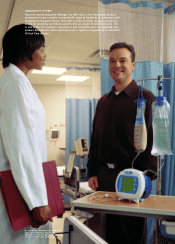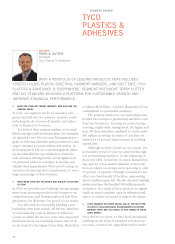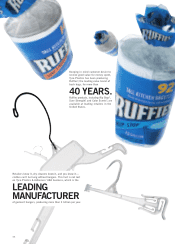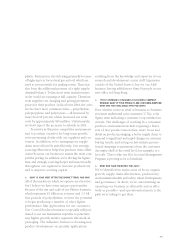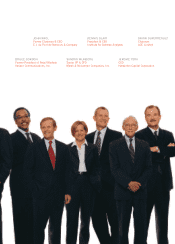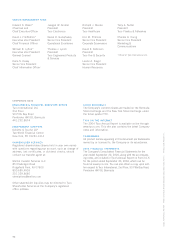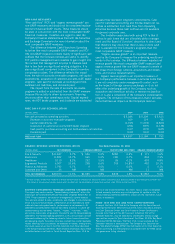ADT 2004 Annual Report Download - page 47
Download and view the complete annual report
Please find page 47 of the 2004 ADT annual report below. You can navigate through the pages in the report by either clicking on the pages listed below, or by using the keyword search tool below to find specific information within the annual report.
45
plastic. Resin prices started rising primarily because
of higher prices for natural gas and oil, which are
used as raw materials for making resins. There has
also been the additional pressure of a tight supply-
demand balance. Today, most resin manufacturers
in the world are running at full capacity. Therefore,
resin suppliers are charging and getting premium
prices for their product. In fiscal year 2004, the costs
for the three most common resins—polyethylene,
polypropylene, and polystyrene— all increased by
more than 50 percent, which increased our resin
costs by approximately $50 million. Unfortunately,
we don’t expect the increases to subside in 2005.
To survive in this price-competitive environment
and to position ourselves for long-term growth,
we’re partnering closely with our suppliers and cus-
tomers. In addition, we’re managing our supply
chain more effectively and efficiently. Our strategic
sourcing efforts have helped us purchase resin collab-
oratively across our business to ensure the most com-
petitive pricing. In addition, we’re driving Six Sigma,
lean, and strategic sourcing deeper and more broadly
throughout our segment to increase productivity
and to improve working capital.
Q: WHAT IS YOUR MOST ATTRACTIVE MARKET TODAY, AND WHY?
All of the markets in which we operate are attractive,
but I believe we have some unique opportunities.
Because of the size and scale of our Plastics business,
which represents $1 billion in revenue and 1.5 bil-
lion pounds of polyethylene, we have the potential
to begin producing a number of other higher-
performance film applications for our customers.
Our Coated Products business is especially well posi-
tioned to use our lamination expertise to penetrate
new higher-growth market segments like medical
packaging. The Adhesives business is focusing new
product development on specialty applications
resulting from the knowledge and expertise of our
research and development center staff. Expansion
outside of the United States is key for our A&E
business, having added more than 50 people in our
new office in Hong Kong.
Q: TYCO IS PRIMARILY A BUSINESS-TO-BUSINESS COMPANY,
WHEREAS MANY OF YOUR PRODUCTS ARE CONSUMER-ORIENTED.
WHAT ARE THE CHALLENGES THIS PRESENTS?
First, whether you’re in retail or business-to-business,
you must understand your customers’ CTQs, a Six
Sigma term indicating a customer’s top satisfaction
criteria. The challenges of working in a consumer
products environment include requiring a faster
rate of new product innovation, more focus and
detail on product packaging, a better supply chain to
respond to significant and rapid changes in customer
buying trends, and acting on last-minute promo-
tional campaign requirements from the customer.
An empty shelf at the retail level, for example, is a
lost sale. This is why our Key Account Management
Program is proving to be so beneficial.
Q: WHAT ARE YOUR PRIORITIES FOR 2005?
We’ve identified six major areas of focus: organic
growth; supply chain effectiveness; productivity;
environmental health and safety; talent development;
and governance. In short, we’re concentrating on
operating our business as efficiently and as effec-
tively as possible—and operational intensity is the
path we’re taking to get there.


